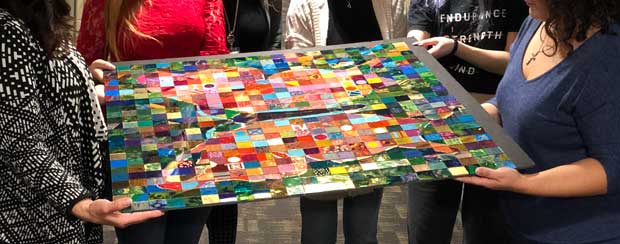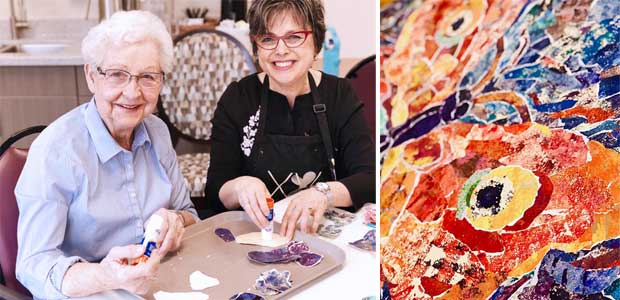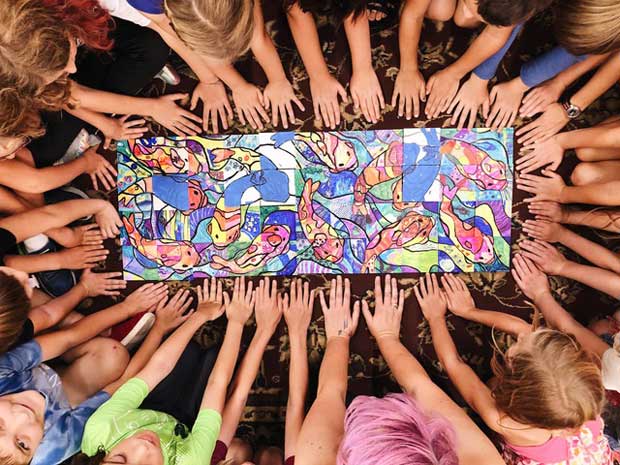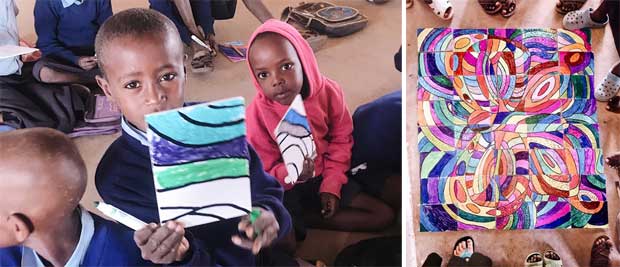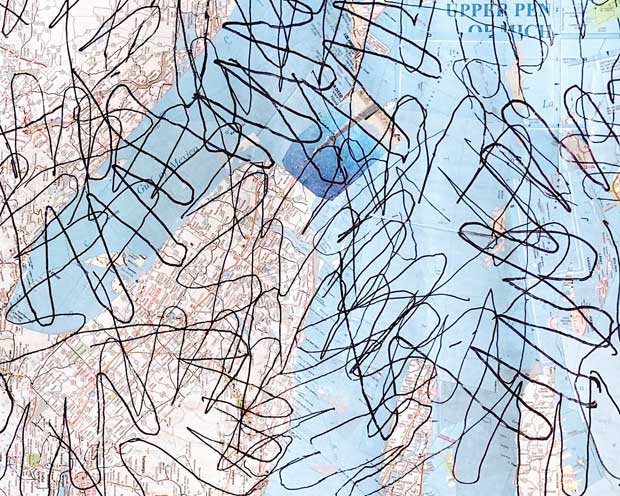
Celebrate with us! We reached our first goal of 1000 handprints!
Art is one way, or solution, to work through some of my own dilemmas or emotional scars. My art supports the tension of being in process and moving forward. Over the years, this work has evolved from static art hanging on a wall to vibrant interactive healing spaces involving others.
For example, I created Let Go, which showcased during ArtPrize 2017 in Grand Rapids, Michigan, as a positive step to work through a personal situation where I felt stuck—unable to let go of debilitating thoughts and emotions. By being vulnerable and willing to put my work out there, 70,000 ArtPrize visitors joined me on the creative healing journey by writing their own let go notes. The interactive public art helped many work through personal challenges, and countless individuals, besides myself, experienced emotional or spiritual freedom.
My latest work, Open Hands, an interactive traveling art experiment, is no exception. The work, first inspired by Babette’s Feast—a fictional story about a refugee’s plight, is about opening our fists in times of struggle and lending a hand to others. Like Babette, I am learning how to overcome adversity by redirecting my attention to the needs of others.
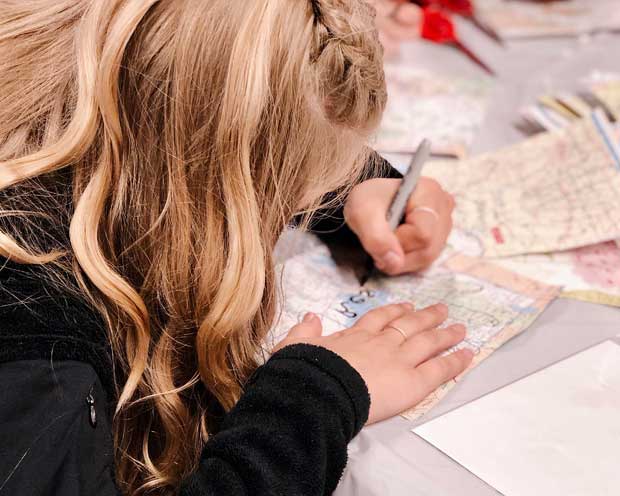
Here’s a bit of my backstory
When I was 19, my parents divorced. Our once bustling home was decimated overnight. My dad physically checked out; my mother emotionally checked out.
During school breaks, I found my childhood home completely empty. While wandering from room to room, each space felt silent—vacant. So, not only was I learning to deal with my parent’s divorce, but now deep loneliness crept into my life.
Sometimes, because of the isolation, I just sat on the floor and cried. The never-ending cycle of aloneness overwhelmed me. Finally, after a few months of constantly spiraling downward, I realized that in order to survive I needed a change. So, I left my Michigan home and moved to Southern California.
At first, the new adventure sparked hope, but I didn’t realize that my deep grief and debilitating depression would follow me all the way to the West Coast. My daily phone calls to my mom often ended with her repeating this mantra: “Get your thoughts off yourself, and do something nice for someone else.”
With nothing to lose, I decided to give my mom’s solution a try. When someone was sitting alone in the school cafeteria, I asked them to join me. When my grandmother sent homemade cookies, I shared them with my roommates. I also ended up assisting a schizophrenic patient during meal times through a volunteer school program at Camarillo State Hospital.
My mom’s wise counsel, at the time, was hard to understand. But looking back, she was helping me learn how to cope. She was teaching me to replace the inward focus on my own negative circumstances with an outward focus—benefiting others. While grieving my broken family was healthy and necessary, my traumatic experiences opened my heart and my art to the sorrows and needs of others.
Years later, I realized that, like me, so many others are stuck in hurtful situations. Brokenness is part of life. Illness, stress, loss, divorce, and suicide continue to interrupt our lives. Perhaps focusing our attention on others won’t solve all our problems, but overcoming the “selfie” attitude will help alleviate some of them.
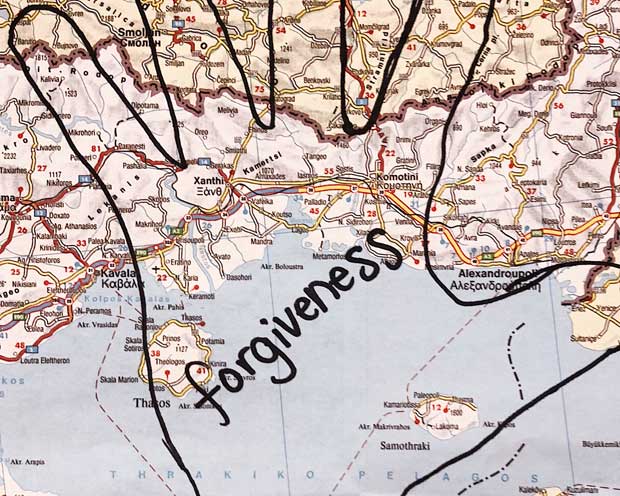
Open Hands encourages closing our phones and opening our hands to the needs of others. The work calls for resiliency—growing through adversity, bouncing back, and learning to thrive for the wellbeing of others. Open Hands is about embracing brokenness through redemption and hope—by being part of the solution.
Where in the world is Open Hands? Follow on Instagram to find out and help reach the second goal of 2,500 handprints.
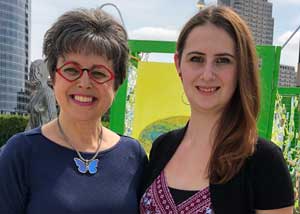 The butterfly effect, an alternative scientific theory, challenges us to consider that every tiny action could have a large effect. The smallest deed or word–positive or negative–has the potential to change the course of an individual’s life. Whitney’s story demonstrates how to turn heartache into an opportunity for hope:
The butterfly effect, an alternative scientific theory, challenges us to consider that every tiny action could have a large effect. The smallest deed or word–positive or negative–has the potential to change the course of an individual’s life. Whitney’s story demonstrates how to turn heartache into an opportunity for hope:
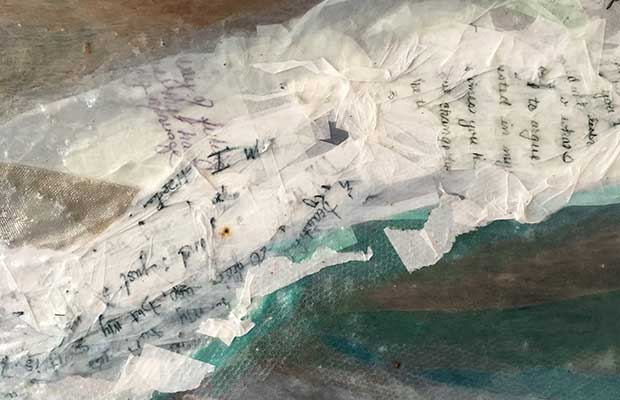
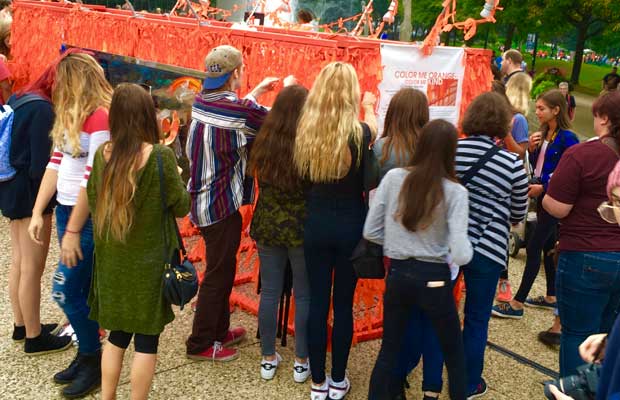
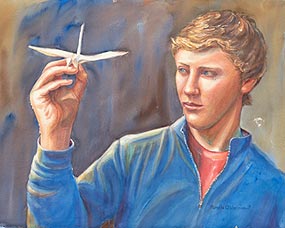 Participatory art has a subtle power to serve as a healing catalyst. Visitors often experience new insight through connecting with the work. As the artwork begins to unlock the soul, it becomes a place of hope and healing. Walker’s autism story inspired an avalanche of hope, with more than twenty thousand ArtPrize visitors writing prayers for other children, like Walker, at
Participatory art has a subtle power to serve as a healing catalyst. Visitors often experience new insight through connecting with the work. As the artwork begins to unlock the soul, it becomes a place of hope and healing. Walker’s autism story inspired an avalanche of hope, with more than twenty thousand ArtPrize visitors writing prayers for other children, like Walker, at 